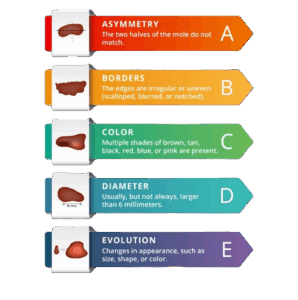Dermatopathology in the High Desert: Diagnosing UV-Related Skin Disease in New Mexico
Hillary R. Elwood, MD
August 4, 2025

A Unique Climate, A Unique Challenge
New Mexico’s striking natural beauty and sunny skies come with a serious health tradeoff—elevated risk of sun-induced skin damage. With over 280 days of sunshine annually and elevations that intensify UV radiation exposure, New Mexicans are uniquely vulnerable to photodamage and skin cancers. These risks are particularly pronounced among individuals with Fitzpatrick skin types I–III, outdoor workers, and those with a history of frequent sunburns or tanning bed use.
UV Radiation and Skin Damage
Ultraviolet (UV) radiation, specifically UVA and UVB wavelengths, is a recognized carcinogen. Chronic exposure to these rays can result in:
- Photoaging (wrinkling, pigment changes, skin laxity)
- Actinic keratoses (precancerous lesions)
- Non-melanoma skin cancers, including basal cell and squamous cell carcinoma
- Melanoma, (an aggressive and potentially fatal skin cancer)
Early identification and accurate diagnosis are key to preventing progression and ensuring effective treatment.
 The Dermatopathologist’s Role in the Lab
The Dermatopathologist’s Role in the Lab
At TriCore, our board-certified dermatopathologists specialize in the microscopic and molecular evaluation of skin biopsies. When a specimen is submitted, it enters a tightly coordinated diagnostic workflow that combines clinical context with advanced laboratory techniques.
The Diagnostic Process Includes:
- Gross Examination and Tissue Preparation
Once a skin biopsy is collected, it is preserved in formalin and sent to the lab. Here, a trained technician inspects it visually (gross examination) to confirm the sample is adequate. The tissue is then processed—embedded in paraffin wax, sliced into ultra-thin layers, and stained with hematoxylin and eosin (H&E), a standard dye that highlights key cellular structures for initial review under the microscope. - Microscopic Evaluation
Using a microscope, the dermatopathologist thoroughly examines the stained tissue to arrive at a final diagnosis, including examination of:
-
- Epidermal changes (thickness, keratinization, inflammatory pattern, ulceration, atypia)
- Dermal inflammation (type, pattern location)
- Pigment or deposits (melanin, amyloid,mucin)
- Infectious organisms (fungi, bacteria, viruses)
- For tumors: type of cells present, depth of invasion, features of malignancy, margin status
Any pertinent findings are included in the patient’s dermatopathology report.
3. Advanced Testing for More Clarity When the standard stain doesn’t provide a complete answer, additional techniques may be used:
- Immunohistochemistry (IHC): Special antibodies are used to highlight specific proteins in the tissue. This helps identify the type of cells present, especially when diagnosing complex or unusual skin cancers like melanoma.
- Special Stains: These may be used to detect certain materials or infectious organisms that might not show up on the standard H&E stain.
- Molecular Testing (if indicated): In certain cases, genetic tests may be performed to detect specific mutations (e.g., BRAF in melanoma) or to evaluate for skin lymphomas.
This approach—starting with basic microscopy and expanding to specialized tools as needed—ensures an accurate and actionable diagnosis, supporting effective treatment planning.
In regions like New Mexico, where sun exposure is a daily reality, understanding the dermatologic impact of UV radiation is critical. Accurate diagnosis of skin conditions—ranging from benign changes to aggressive cancers—relies on close collaboration between clinicians and dermatopathologists.
Through a detail-oriented diagnostic process, providers are equipped with the insights needed to make informed treatment decisions. Whether managing a common precancerous lesion or a rare malignancy, the integration of clinical context and pathology expertise plays a vital role in improving outcomes for patients under the sun.